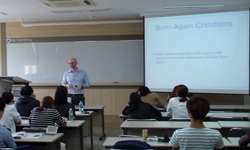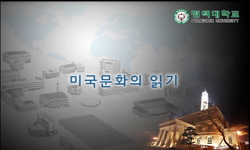The resistance against rigged presidential election in March 15, 1960, started from student demonstrations in Daegu city on February 28 of 1960 and spreaded throughout the cities in South Korea. Then, Student demonstrations did not show concrete polit...
http://chineseinput.net/에서 pinyin(병음)방식으로 중국어를 변환할 수 있습니다.
변환된 중국어를 복사하여 사용하시면 됩니다.
- 中文 을 입력하시려면 zhongwen을 입력하시고 space를누르시면됩니다.
- 北京 을 입력하시려면 beijing을 입력하시고 space를 누르시면 됩니다.

4월혁명과 이승만 정권의 붕괴 과정 = April Revolution and the Fall of Syngman Rhee Regime in South Korea - Struggle for Democracy and Reactions from Democratic Party, United States, and Korea Troops -
한글로보기https://www.riss.kr/link?id=A82391792
- 저자
- 발행기관
- 학술지명
- 권호사항
-
발행연도
2010
-
작성언어
-
-
주제어
4월혁명 ; 이승만 ; 장면 ; 쿠데타 ; 미국 ; 3.15 부정선거 ; 학생시위 ; 한국군 ; April Revolution ; US -ROK Relations ; Syngman Rhee ; Democratic Party ; Democratic Movement ; Rigged Election in March 15 ; 1960
-
KDC
900
-
등재정보
KCI등재
-
자료형태
학술저널
-
수록면
147-192(46쪽)
- 제공처
- 소장기관
-
0
상세조회 -
0
다운로드
부가정보
다국어 초록 (Multilingual Abstract)
student demonstrations, there were no requests for resignations of specific officials, including President, who had responsibility on rigged election. The request for resignation of President Rhee appeared at first during the second uprising in Masan city on April 11 but some of demonstrators shouted resignation request only sporadically. Some Democratic Party members had requested resignation of President Rhee since March 15 election but it was no more than offensive rhetoric against government rather than real and practical objective of opposition party activity. The situation of April 19 was similar. On the day, demonstrators went ahead to Kyungmudae. Presidential residence, for delivering their requests to President rather than for expelling President. However, Rhee government shot demonstrators and huge casualty occurred. After it, the objective of mass struggle for democracy developed to ask responsibility of government which conducted cruel violence to the
citizen and to request the resignation of President Rhee. From April 25, 1960, the struggle for democracy converted into the struggle for overthrowing of Rhee government and finally next day, on April 26, President Rhee informed people his resignation from presidency. The intervention of the United States into political affairs in South Korea and passive attitude of Korean troops in repressing demonstrations influenced President Rhee to resign. United States had showed non-intervention policy on political affairs in South Korea at the
early stage of resistance. However, the leaders of the US government decided to intervene Korean affairs because they worried possibility that the political unrest in South Korea worsened into the stage of radical political change or revolution. Namely, the US intervened into internal politics in South Korea by way of prevention of revolution. Of course, passive attitude of Korean troops against demonstrators came from the US intervention but it also stemmed from Korean Military leaders themselves. Korean troops had maintained some autonomy from Rhee Regime because the United Nations Commander had operational control of Korean troops. But
this kind of autonomy of Korean troops from political power also made people worry about the possibility that Korean Army took over political power by the coup at the time. While people's struggle for democracy was main cause for the fall of Syngman Rhee regime, intervention of the US and Korean troops also influenced on the collapse of Rhee regime. Therefore, substantial political change in South Korea after April Revolution occurred in the way that exiting political system maintained and conservative politician kept their political power because of the influence of the US and Korean troops, basically status quo powers in Korean Peninsular.
The resistance against rigged presidential election in March 15, 1960, started from student demonstrations in Daegu city on February 28 of 1960 and spreaded throughout the cities in South Korea. Then, Student demonstrations did not show concrete political programs to correct rigged election. During the early stage of
student demonstrations, there were no requests for resignations of specific officials, including President, who had responsibility on rigged election. The request for resignation of President Rhee appeared at first during the second uprising in Masan city on April 11 but some of demonstrators shouted resignation request only sporadically. Some Democratic Party members had requested resignation of President Rhee since March 15 election but it was no more than offensive rhetoric against government rather than real and practical objective of opposition party activity. The situation of April 19 was similar. On the day, demonstrators went ahead to Kyungmudae. Presidential residence, for delivering their requests to President rather than for expelling President. However, Rhee government shot demonstrators and huge casualty occurred. After it, the objective of mass struggle for democracy developed to ask responsibility of government which conducted cruel violence to the
citizen and to request the resignation of President Rhee. From April 25, 1960, the struggle for democracy converted into the struggle for overthrowing of Rhee government and finally next day, on April 26, President Rhee informed people his resignation from presidency. The intervention of the United States into political affairs in South Korea and passive attitude of Korean troops in repressing demonstrations influenced President Rhee to resign. United States had showed non-intervention policy on political affairs in South Korea at the
early stage of resistance. However, the leaders of the US government decided to intervene Korean affairs because they worried possibility that the political unrest in South Korea worsened into the stage of radical political change or revolution. Namely, the US intervened into internal politics in South Korea by way of prevention of revolution. Of course, passive attitude of Korean troops against demonstrators came from the US intervention but it also stemmed from Korean Military leaders themselves. Korean troops had maintained some autonomy from Rhee Regime because the United Nations Commander had operational control of Korean troops. But
this kind of autonomy of Korean troops from political power also made people worry about the possibility that Korean Army took over political power by the coup at the time. While people's struggle for democracy was main cause for the fall of Syngman Rhee regime, intervention of the US and Korean troops also influenced on the collapse of Rhee regime. Therefore, substantial political change in South Korea after April Revolution occurred in the way that exiting political system maintained and conservative politician kept their political power because of the influence of the US and Korean troops, basically status quo powers in Korean Peninsular.
국문 초록 (Abstract)
대중항쟁 과정에서 그 목표와 주체들이 바뀌어가는 것은 일반적인 현상이다. 4월혁명은 이승만 정권의 붕괴라는 결과를 발생시켰지만 이승만 대통령의 퇴진이 항쟁의 시작부터 주장된 것은...
대중항쟁 과정에서 그 목표와 주체들이 바뀌어가는 것은 일반적인 현상이다. 4월혁명은 이승만 정권의 붕괴라는 결과를 발생시켰지만 이승만 대통령의 퇴진이 항쟁의 시작부터 주장된 것은 물론 아니었다. 1960년 2월 28일 대구지역 고등학생시위로부터 시작된 학생 시위는 노골적인 부정선거에 대한 반발이었다. 그러나 학생들의 시위 구호와 요구사항은 구체적인 정치적 개선사항을 담지는 못했다.특정 기관 또는 특정 책임자를 거명하며, 타도하거나 사퇴를 요구하는 구호 같은 것은 없었다. 3.15 부정선거가 자행된 이후 일부 학생과 시민들은 정부통령 선거의 재선거를 요구하였다. 그러나 이때에도 “이승만 물러가라”는 구호는 나오지 않았다. 학생과 시민의 민주항쟁 과정에서 이러한 구호가 처음 나온 것은 1960년 4월 11일 제2차 마산봉기 때부터였다. 그러나 이는 시위대 일부가 특정한 국면에서 외친 구호였지 대다수의 시위대가 반복적이고 지속적으로 외치는 구호는 아니었다. 제2차 마산봉기 이후 학생시위가 계속되었지만 이러한 시위에서도 이승만 퇴진 구호는 나오지 않았다. 반면 민주당 일부 간부들과 지방당원들은 3.15 부정선거 이후 간헐적으로 이승만 퇴진을 요구하였다. 그러나 이때부터 민주당이 정권타도에 나선 것은 아니었다. 민주당은 기존 정치제도 안에서, 또한 합법적인 틀안에서의 대정부 투쟁을 고수했다.대규모 시위 및 희생자가 발생한 1960년 4월 19일에도 상황은 마찬가지였다. 4.19 봉기의 과정에서 일부 시위대가 이승만 퇴진구호를 외쳤지만 이러한 구호는 1987년 6월항쟁 때 외쳐진 “호헌철폐”, “직선쟁취” 같이 대부분의 시위대가 공유하면서 반복적으로 외쳐지며 항쟁의 목표를 집약해주는 구호는 아니었다.당시 학생들이 경무대로 간 것도 여러 정황을 볼 때 이승만 대통령을 몰아내기 위해 간 것이 아니라 그에게 항의하고 대화하기 위해 간 것이었다. 그러나 이승만 정부는 경무대 앞에서 시위대에 총을 쏘았고, 대규모 유혈상태가 발생하였다.이에 민주항쟁은 부정선거 문제보다는 시민들에게 무자비한 폭력을 행사한 정부와 집권자의 책임을 묻는 방향으로 전환되었다. 4월 23일 민주당의 지도자 장면도 부통령직을 사퇴하고, 이승만 대통령의 퇴진을 요구하는 성명서를 발표하였다. 장면의 부통령직 사퇴론은 3.15 부정선거 때부터 있어왔던 것이었다. 때문에 장면의 입장 표명은 당시에는 뒤늦은 것으로 받아들여졌다.4월 25일부터 민주항쟁은 정권타도 운동으로 전환되는 양상이 뚜렷해졌다. 25일 오후 마산에서는 이승만 대통령의 실명까지 거론하며 그 퇴진을 요구하는 할머니들의 시위가 발생하였다. 한편 같은 날 오후 서울에서는 교수단이 대통령의 퇴진 요구가 포함된 성명서를 발표하고, 시위를 전개하였다. 여기에 몰려든 학생과 시민들은 계속해서 반복적으로 이승만 대통령의 퇴진 구호를 외쳤다. 이 날의 시위는 사실상 철야시위로 이어졌고, 26일 이른 아침부터 서울 시내에 집결한 군중들은 3.15 부정선거의 재선거, 이승만 퇴진, 경찰 책임자의 처벌을 주장하였다. 그리고 마침내 4월 26일 오전 이승만 대통령은 물러가겠다는 성명서를 발표하였다. 민주항쟁이 정권퇴진운동으로 본격적으로 시작되고 하루도 지나지 않아 이승만 퇴진이라는 결과가 발생한 것이었다. 이렇게 급속한 사태전환이 발생한 이면에는 미국과 한국 군부의 작용이 있었다. 미국은 3.15 부정선거의 진행과정에서 이른바 내정불간섭을 명분으로 여기에 개입하지 않는 정책을 취하였다. 그러다가 4월 11일 2차 마산봉기를 계기로 상황의 심각성을 느끼고 여기에 적극 개입하는 정책으로 전환하였다. 미국이 여기에 개입하게된 것은 민주항쟁이 사회혼란을 발생시키고 급진화되는 것을 방지하기 위해서였다. 즉 일종의 예방혁명적인 조치였다. 이에 미국정부는 4월 19일 대규모 봉기와 유혈사태가 발생하자 이승만 정부에게 타협을 촉구하는 방향으로 개입하였다. 또한 4월 25일과 26일 대규모 시위가 재발하자 한국 정부요인을 압박하여 이승만 대통령의 퇴진을 실질적으로 촉구하기도 했다. 이승만 정부는 비상계엄령을 발동하고 군을 투입하여 시위를 막으려 했지만,한국군은 중립적인 태도를 보였다. 당시 한국군의 중립적 태도는 물론 미국의 영향력과 관련이 있다. 이승만 정부는 비상계엄령을 발동하고 군을 투입하여 시위를 막으려 했지만, 한국군은 중립적인 태도를 보였다. 당시 한국군의 중립적 태도는 물론 미국의 영향력과 관련이 있다. 미국 정부와 주한미군 지도자들은 시위 진압을 위해 이승만정부가 한국군을 동원하는 것을 승인하였지만, 군이 시민들과 직접적으로 충돌하지 않도록 거듭 당부하였다.
목차 (Table of Contents)
- Ⅰ. 머리말
- Ⅱ. 2차 마산봉기와 이승만 퇴진 구호의 등장
- Ⅲ. 4.19 봉기 직후 정권퇴진운동으로의 전환
- Ⅳ. 미국의 개입과 한국군의 동향
- Ⅴ. 맺음말
- Ⅰ. 머리말
- Ⅱ. 2차 마산봉기와 이승만 퇴진 구호의 등장
- Ⅲ. 4.19 봉기 직후 정권퇴진운동으로의 전환
- Ⅳ. 미국의 개입과 한국군의 동향
- Ⅴ. 맺음말
동일학술지(권/호) 다른 논문
-
- 한국외국어대학교 역사문화연구소
- 한동현(Han, Dong-hyun)
- 2010
- KCI등재
-
- 한국외국어대학교 역사문화연구소
- 王善軍
- 2010
- KCI등재
-
- 한국외국어대학교 역사문화연구소
- 박재영(Park, Jae-young)
- 2010
- KCI등재
-
- 한국외국어대학교 역사문화연구소
- 최찬호(Choi, Cha-nho)
- 2010
- KCI등재




 스콜라
스콜라







